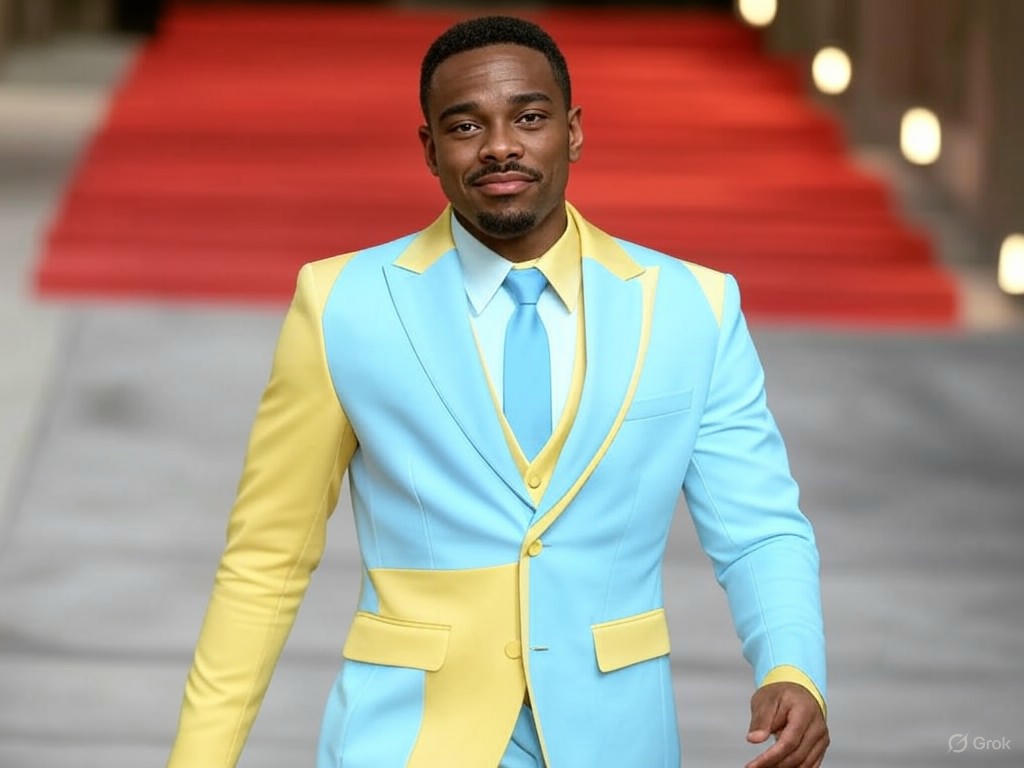
Black Dandyism Takes Center Stage at 2025 Met Gala
The Met Gala’s Bold New Theme: Black Dandyism
Imagine walking into a world where fashion isn’t just about looking good—it’s a powerful statement of identity and resilience. At the 2025 Met Gala, Black Dandyism emerged as the heartbeat of the event, turning heads and sparking conversations across the globe. This theme, titled “Superfine: Tailoring Black Style,” invited celebrities and designers to dive into a rich tapestry of Black creativity, blending historical elegance with modern twists that celebrated centuries of self-expression and cultural pride.
With outfits ranging from sharply tailored suits to bold, unexpected accessories, the night highlighted how Black Dandyism has always been more than mere aesthetics—it’s a form of liberation. Attendees didn’t just wear clothes; they wore their stories, making the red carpet a canvas for history in the making. Have you ever thought about how a simple piece of fabric could challenge societal norms? That’s exactly what unfolded here, proving fashion’s role as a quiet revolution.
Understanding Black Dandyism
Black Dandyism is that magnetic blend of style and substance, where Black individuals use clothing to assert their autonomy and rewrite the rules. It’s about taking European-inspired tailoring and flipping it into something uniquely powerful, a nod to resistance born from historical struggles. This movement gained steam post-Emancipation and flourished during the Harlem Renaissance, turning everyday attire into a bold declaration of pride and individuality.
At its core, it’s personal yet political, a way for people to say, “I’m here, and I’m unapologetic.” What makes Black Dandyism so enduring is how it evolves, adapting to new eras while holding onto its roots of defiance and joy.
Historical Roots of Black Dandyism
This style didn’t just appear overnight; it has deep roots tracing back to the late 19th century. After Emancipation, Black communities began adopting and reinventing European fashions as acts of self-definition, much like how the Harlem Renaissance used zoot suits and impeccable tailoring to signal cultural rebirth.
- It kicked off in the 1910s with events like the Silent Protest Parade, where participants’ polished looks spoke louder than words against injustice.
- By the 1940s, it faced fierce backlash, as seen in the Zoot Suit Riots, yet this only amplified its message of resilience.
- Inspirational figures like Langston Hughes and Malcolm X embodied this spirit, while today, stars such as Janelle Monáe infuse it with fresh, contemporary energy.
Over time, Black Dandyism has woven itself into the fabric of history, symbolizing freedom and creativity that refuses to be silenced. It’s fascinating to consider how these early innovators paved the way for today’s red carpet moments—think of it as a legacy that’s still unfolding.
Redefining the Red Carpet Through Black Dandyism
The 2025 Met Gala didn’t just host a party; it hosted a revolution in style. By centering Black Dandyism, the event merged vintage influences with cutting-edge designs, showcasing everything from luxurious fabrics to daring color palettes that told stories of heritage and innovation. Celebrities rose to the challenge, creating looks that were as much about personal narrative as they were about high fashion.
This wasn’t your average gala— it was a platform where Black Dandyism shone brightly, proving that elegance can be a form of activism. If you’ve ever attended a big event, you know how outfits can make or break the night, but here, they redefined it entirely.
Spotlighting Modern Dandy Icons at the Gala
- A$AP Rocky mixed pearls and kilts with his signature hip-hop vibe, showing how Black Dandyism can bridge worlds effortlessly.
- Pharrell Williams, as Louis Vuitton’s creative director, blended streetwear luxury in ways that felt both accessible and aspirational.
- Colman Domingo‘s flowing cape and pants challenged gender norms, reminding us that Black Dandyism is about breaking boundaries.
- André 3000 brought his eclectic flair, turning heads with outfits that mixed high fashion and personal storytelling.
These stars didn’t just attend—they embodied Black Dandyism, using the gala to explore what it means to be seen and heard. It’s inspiring to see how their choices echo historical figures, creating a bridge between past and present that feels alive and relevant.
Key Elements of Black Dandy Style
- Flawless tailoring that hugs the body just right, emphasizing confidence and poise.
- Vibrant colors and premium fabrics that add a layer of luxury and personality.
- Surprising accessories like wide-brim hats or gloves that turn an outfit into a narrative.
- A fusion of high-end pieces with streetwear, making Black Dandyism feel inclusive and real.
- Elements of storytelling, where every detail reflects cultural heritage and individual flair.
These components aren’t just trends—they’re tools for expression, inviting everyone to experiment and find their own style. What if you incorporated a few of these into your wardrobe? It might just spark a new appreciation for how clothes can empower.
The Power and Politics of Black Dandyism
Beyond the glamour, Black Dandyism carries a weight of resistance, using self-presentation to combat stereotypes and claim space in restrictive worlds. Historically, it’s been a quiet protest, from the Harlem Renaissance to modern stages, where style becomes a voice for the marginalized.
As one scholar noted, “Black Dandyism is both personal and political, shaping how we see ourselves and how others perceive us.” This tension was palpable at the Met Gala, where outfits weren’t just beautiful—they were bold statements of identity.
The event amplified this by featuring Black artists and creators who wove their legacies into every thread. It’s a reminder that fashion can be a form of activism, asking us: How can your style reflect your story?
A Timeline of Black Dandyism’s Influence
| Era | Key Moments | Impact |
|---|---|---|
| 1700s | Early dandy influences among Black servants during the slave trade | Laid the groundwork for using formal dress to demand dignity and respect |
| Early 1900s | Harlem Renaissance and the Silent Protest Parade | Transformed fashion into a tool for cultural assertion and social change |
| 1940s | Zoot Suit Riots | Highlighted tensions around minority expression, boosting visibility and solidarity |
| 1960s–1970s | Black Power Movement | Integrated dandy aesthetics into broader activism, emphasizing empowerment |
| 2000s–Present | Met Gala themes and celebrity icons | Elevated Black Dandyism to global status, influencing mainstream fashion culture |
This timeline shows how Black Dandyism has adapted and thrived, offering lessons for today’s world. It’s like a roadmap of resilience that keeps inspiring new generations.
The ‘Superfine’ Exhibition: Fashion as Living History
The Met Gala’s companion exhibit, “Superfine: Tailoring Black Style,” brought 300 years of Black fashion to life through garments, portraits, and art. Curated by Dr. Monica L. Miller, it explored how Black Dandyism has shaped identities across time.
- Featured stunning textiles and accessories that illustrated elegance and resistance.
- Included photography of icons, showing the evolution of style as a form of power.
- Highlighted paintings that connect fashion to broader social narratives.
If you visit, you’ll see how this exhibit isn’t just educational—it’s a celebration. For more insights, check out this detailed analysis from Time Magazine, which dives deeper into the theme’s historical significance.
Black Dandyism in Today’s Design World
In contemporary fashion, Black Dandyism is everywhere, from Dior’s runways to emerging designers like Martine Rose. Stars like Chadwick Boseman and Doechii are pushing boundaries with gender-fluid looks that honor tradition while embracing the future.
This influence reminds us that Black Dandyism isn’t static—it’s a living force, encouraging experimentation and bold choices. Want to try it yourself? Start with a well-tailored piece and add your personal twist; you might be surprised at the confidence it brings.
The Lasting Impact of Black Dandyism
From the 2025 Met Gala’s dazzling displays to everyday wardrobes, Black Dandyism continues to shape art, music, and culture with its mix of joy and defiance. It’s amplified Black voices on global stages and sparked renewed interest in sartorial history.
- Brought underrepresented stories to the forefront.
- Set new benchmarks for inclusive and creative fashion.
- Inspired a wave of authenticity in personal style.
In a world craving genuine expression, Black Dandyism offers a blueprint for empowerment. So, what’s your take—how can we keep this legacy alive?
Looking Ahead: The Future of Black Dandyism
As we move forward, Black Dandyism’s legacy will only grow, influencing how we view self-expression in an ever-changing world. The 2025 Met Gala was more than an event; it was a milestone that showed clothes can be declarations of dreams and identity.
We’d love to hear your thoughts—share your favorite Black Dandyism moments in the comments or explore more on our site. If this sparked your interest, check out related posts for deeper dives into fashion history.
References
Here are the sources used in this article, providing valuable insights into Black Dandyism:
- CFDA. “Delving into the Essence of Black Dandyism.” https://cfda.com/news/delving-into-the-essence-of-black-dandyism
- The Met Store. “Slaves to Fashion: Black Dandyism and the Styling of Black Diasporic Identity.” https://store.metmuseum.org/slaves-to-fashion-black-dandyism-and-the-styling-of-black-diasporic-identity-80060428
- Wikipedia. “Black Dandyism.” https://en.wikipedia.org/wiki/Black_dandyism
- Time Magazine. “Met Gala 2025 Theme: Black Dandy History.” https://time.com/7281626/met-gala-2025-theme-black-dandy-history/
- Substack Post. “Exploring Black Dandyism’s Evolution.” https://substack.com/home/post/p-162413039
Black Dandyism, Met Gala 2025, Black fashion history, Dandyism, Black style, Red carpet fashion, Black identity, Cultural legacy, Harlem Renaissance, Zoot Suit Riots







